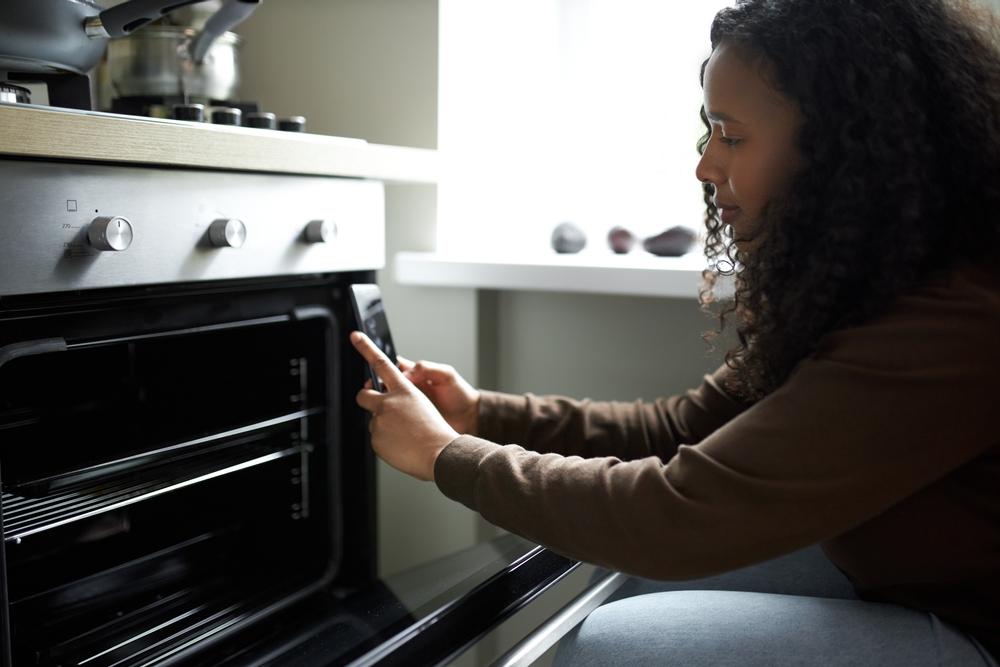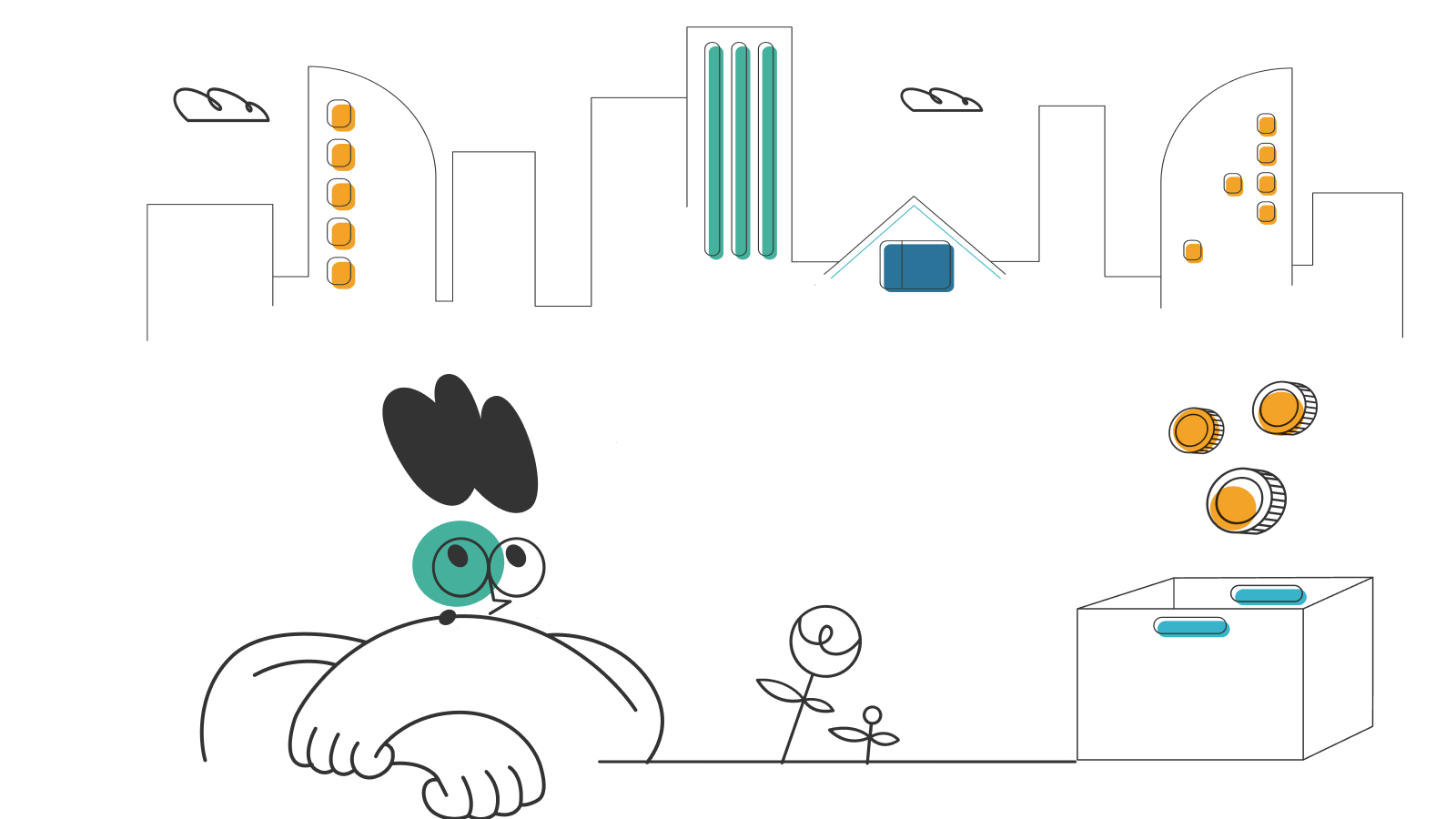What are the Cheapest States to Live In?

Moving soon? Get organized with our free moving checklist.
If you’re looking to move, it can be helpful to consider affordability. Some states may have more affordable housing, but perhaps utility costs are through the roof. In other cases, the cost of living in a state may be relatively high, but perhaps jobs in that state also pay well.
It can be difficult to compare living expenses across each state, but the most commonly used method today is the cost of living index. In this guide to affordable US states, we will look at what factors the cost of living index includes and see how to calculate it. We’ll then review the top ten cheapest states to live in.
What is the cost of living index?
The cost of living index is a method of calculating affordability by evaluating how much money is needed to cover basic living expenses each month. This includes expenses like:
- Housing
- Food
- Utilities
- Transportation
- Healthcare
These expenses are added up to find the total cost of living in a particular state. Then each state’s cost of living is used to find the average for the United States. This average sets the standard and is given a cost of living index of 100. This way, you can compare each state based on whether its cost of living index is below or above 100.
For example, if a state has a cost of living index of 150, it is 50% more expensive to live in than the average state. On the other end of the spectrum, if a state has a cost of living index of 50, it is 50% cheaper than the average state.
Using comparisons based on an average of 100 makes it easier to gauge how states compare. It’s no surprise that housing costs have the most effect on the overall cost of living index for each state. This is typically the largest expense for any household, so it stands to reason that the states with the lowest housing costs are the cheapest to live in.
Top 10 cheapest states to live in
These are the ten cheapest states to live in based on the cost of living index. We will also look at the median household income and unemployment rate in each of these states too, as this helps paint a clearer picture of how comfortable it is to live in each state.
As income data can be unreliable from one source to another, we’ll use the most recent US Census Bureau data for our income numbers to compare the median household incomes in each state. The national median household income is $67,521.
Another data point we will consider is the poverty rate, as this is a strong indicator of whether your income is likely to keep up with the cost of living. For the sake of comparison, the most recent data puts the national poverty rate at 11.4%.
1. Mississippi
Mississippi is the most affordable state to live in, with a cost of living index of 83.3. The biggest factor is that Mississippi has the nation’s lowest housing cost. The housing index for Mississippi is just 66.4, with the median home costing $140,818. With housing costs this low, Mississippi would be a cheap state to live in, even if all other expenses were right around the national average.
However, the state does struggle with low wages. In fact, the state has the nation’s lowest median household income at just $46,511, and the unemployment rate of 3.6% is right around the current national unemployment rate of 3.7%.
Unfortunately, Mississippi also has one of the highest poverty rates in the country, at 18.7%.
The bottom line: Expenses in Mississippi are low, but there are not a lot of high-paying job opportunities. If you can land a job that pays above average though, then your money will go a long way.
2. Kansas
Kansas takes the number two spot here with a cost of living index of 86.5. Housing costs are low, with an index of 72.6. The median home costs $176,898, the third cheapest in the nation.
The job market in Kansas is also strong, as the state boasts the 8th lowest unemployment rate in the country at 2.4%. While the median household income is below the national median at $61,091, this is only a 9.5% difference. The cost of living index is 14.5% below the average, which means Kansas is not only affordable, but wages are still high relative to the cost of living.
Because wages are relatively strong compared to the low cost of living, the poverty rate in Kansas is slightly better than the national average at 10.6%.
The bottom line: Kansas has plenty of job opportunities to go along with low unemployment rates and liveable wages. This makes it not only the second cheapest state to live in, but it’s also possible to live comfortably on the state’s average salary.
3. Alabama
Alabama comes in just a notch below Kansas with an 87.9 cost of living index. The state’s 70.1 housing index is the second lowest in the nation, only behind Mississippi, and the average house price is $170,184.
If you decide to move to Alabama, you should have good luck finding a job as well. That’s because the state’s unemployment rate is only 2.6%, which gives Alabama the 11th lowest unemployment rate in the country.
However, Alabama isn’t without its downsides. While the unemployment rate is low, those jobs also pay far below average, as the median household income in the state is $52,035. This means your income will be roughly 25% lower than the nationwide median, while the cost of living index is just 12.1% below the median.
The poverty rate in Alabama is also significantly higher than average at 14.9%.
The bottom line: Alabama has plenty of job opportunities and a low cost of living, but the typical job pays significantly less than the national average. This could make comfortable living very difficult unless you are moving to the state with an exceptionally high-paying job lined up.
4. Oklahoma
Up next is Oklahoma, with an 87.9 cost of living index. Home prices are low, with the average home costing $151,469. The housing index is 74.7, putting home costs just over 25% below the national average.
However, poverty is also a big problem in Oklahoma, with a 14.3% poverty rate. This is primarily due to low wages, with a median household income of $53,840. So, even though unemployment is better than average at 2.8%, those jobs still often don’t pay enough to keep up with the low cost of living.
Oklahoma has some of the country’s lowest electricity costs at just 7.63 cents/kWh. So if your household uses a lot of electricity, you’ll be happy with your low electric bills here.
The bottom line: Oklahoma is a cheap state to live in, but you’ll need to earn higher than the state’s average to be comfortable.
5. Georgia
Georgia rounds out the top five cheapest states to live in with an 88.8 cost of living index. Houses are relatively affordable, with a housing index of 74.4. The average home in Georgia sells for $246,272. This, of course, is dependent on location, as houses in Atlanta tend to be on the high side. Still, areas outside of the city are far more affordable.
Georgia’s unemployment rate is better than average at 2.8%, so job prospects are plentiful. Wages are below the national average but are more in line with the cost of living than in other states on our list. Despite this, the poverty rate is still above the national average at 14.0%.
Utility costs in Georgia are also 9.5% below the national average.
The bottom line: Georgia is one of the cheapest states to live in, and the median household income is sufficient to cover expenses.
6. Tennessee
With an 89.0 index, Tennessee is the 6th cheapest state to live in, with the average house priced at $230,253. This is just slightly cheaper than Georgia, but Tennessee does lag slightly behind in other areas, such as utility and grocery costs. Utility costs are still low at 8.5% below the national average, but this is still slightly higher than in Georgia.
The unemployment rate in Tennessee is just below the national average at 3.4%. Tennessee’s median household income is on the low side at $54,883. However, Tennessee is one of the few states that do not charge income tax on wages, so incomes can stretch further here than in most states.
The poverty rate is still higher than the national average but is lower than many other states in this top ten list at 13.6%.
The bottom line: Tennessee has affordable housing, low utility costs, and an average unemployment rate. Wages are low, but the state doesn’t collect income tax which helps with the affordability of living in Tennessee.
7. Missouri
With an 89.8 cost of living index, Missouri is the seventh cheapest state to live in. The average home in the state costs $194,226, putting it approximately 20% below the national average. This makes Missouri one of the most affordable states to live in that is not located in the South.
Wages are below the national average at $57,290 for the median household income. Missouri also has one of the lowest unemployment rates at 2.5%, and the poverty rate is just slightly above average at 12.1%. This is largely due to the state having one of the highest minimum wages in the nation at $11.15 per hour.
The bottom line: Missouri is an affordable state to live in with decent job prospects. Wages are a bit below average, but the low overall cost of living more than offsets this.
8. Iowa
Iowa has an 89.9 cost of living index and boasts the 6th lowest housing cost in the nation. The median cost of a home for a single family in Iowa is $167,036. Utility costs are also relatively low, in part due to the low electricity rate of 8.97 cents/kWh.
The state has a 2.5% unemployment rate, placing it among the lowest in the United States. While its median household income of $61,836 is still below the national average, it is the highest of any state in this top ten list.
The poverty rate is better than the national average at 10.2%, which directly correlates to the reasonable average income levels combined with the low cost of living.
The bottom line: The Midwest may not be exciting to everyone, but Iowa is a very affordable state. It also doesn’t have the poverty problem that most of the top ten cheapest states have.
9. West Virginia
West Virginia is the ninth cheapest state to live in, with a 90.5 cost of living index. The state has some of the most affordable housing costs in the nation, with the average single-family home priced at just $117,639. Utilities are also well below the average, in large part due to the low 8.75 cents/kWh for electricity.
Despite the low cost of living, West Virginia has one of the country’s worst poverty rates at 14.8%. This is primarily driven by low wages, as the median household income is only $48,037, which is 28% below the national average. Unemployment is also higher than average at 3.7%.
The bottom line: Expenses in West Virginia are low, but for many people, the wages are well below a livable income level. With this combined with the higher-than-average unemployment rate, it would be very important to have an above-average paying job lined up before moving to this state.
10. Indiana
Indiana takes the final spot in the top ten cheapest states to live in with a 90.6 index. The state has the eighth cheapest housing cost, with the average single-family home priced at $185,805. This puts housing costs more than 21% below the national average.
Incomes are approximately 13% below the US average, with a $58,235 median for a household. Poverty rates are right around the national average at 11.6%.
Job prospects are plentiful, as Indiana has one of the lowest unemployment rates at just 2.6%.
The bottom line: Indiana may not be as cheap to live in as some of the other states on this list, but the economy is stronger with a good job market and average poverty rate.
Key takeaway: there is more to consider than the cost of living
As we’ve seen, the cost of living is an important factor when choosing a state to move to, but it is not the only factor. It’s also important to look at income levels in affordable states as well as consider the job market and overall economy. Once you’ve decided on the best state for you, Updater can help you have a seamless move. Learn more at www-staging.updater.com.













